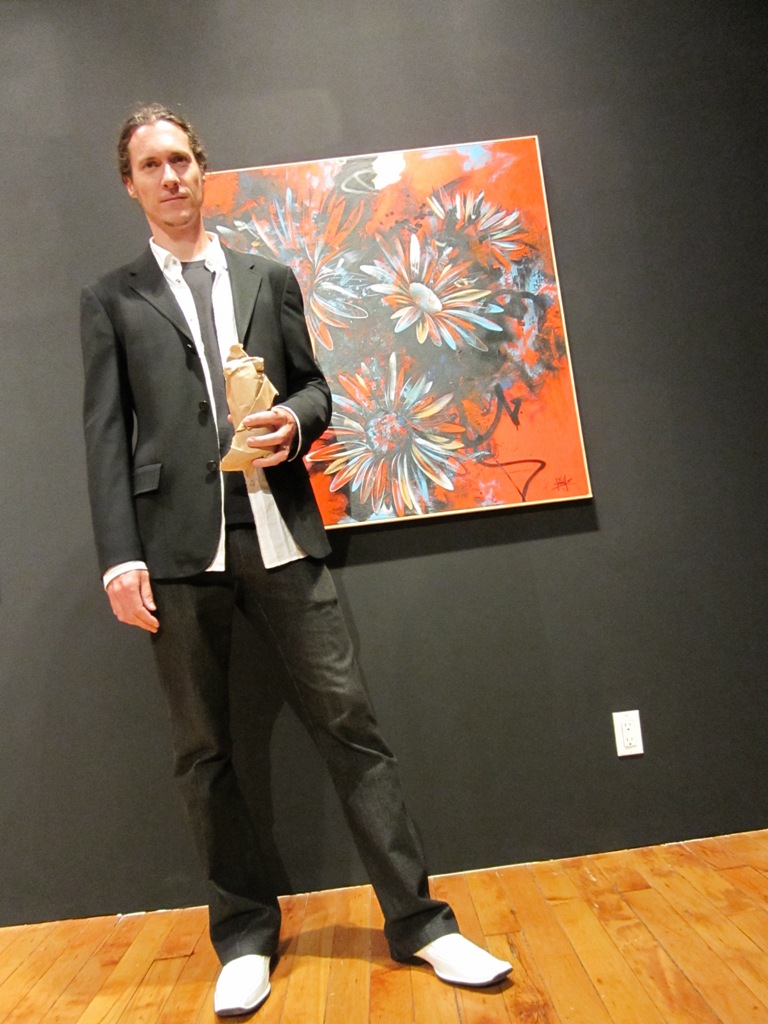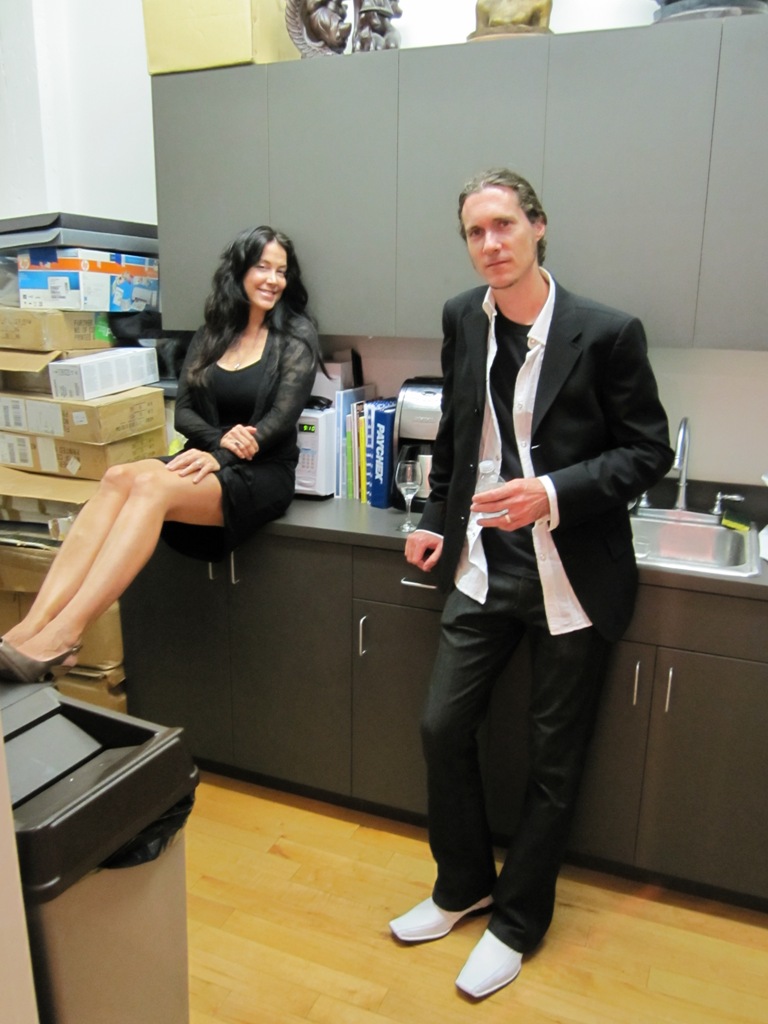<Back to Index>
- Graphic Designer Stefan Kirov Kanchev, 1915
- Artist and Designer Dave Kinsey, 1971
- Cartoonist and Illustrator Peter Ledger, 1945
PAGE SPONSOR

Stefan Kirov Kanchev (Bulgarian: Стефан Киров Кънчев; 6 August 1915 – 22 August 2001) was a Bulgarian graphic artist best known for his logo design work. He has been referred to as the "father of Bulgarian graphic design" and the "master of the trademark".
Kanchev was born in Kalofer, a town in the sub - Balkan valleys of south central Bulgaria (then the Kingdom of Bulgaria). The son of an icon painter, he enrolled at the National Academy of Arts in the capital Sofia, where he studied mural painting in 1940 – 1945 under Dechko Uzunov. After leaving the academy shortly before graduation, Kanchev took part in numerous exhibitions and biennales in Bulgaria and abroad, most notably in Belgrade, Budapest, Berlin, Moscow, Warsaw, Brno, Ljubljana and New York City. Individual exhibitions of his work have been organized in Sofia, Moscow, Prague, Berlin, Warsaw and Budapest, among other cities. In total, Kanchev has authored around 1,600 logos, including highlights such as the National Palace of Culture, National Art Gallery, National Opera and Ballet, Bulgarian National Television, Union of Bulgarian Artists, TZUM, International Fair Plovdiv, Petrol AD, etc.
In 1967, Kanchev participated in an AIGA (American Institute of Graphic Arts) international exhibition in which he presented 23 of his logos, with particular emphasis on his Petrol AD trademark. The winner of a large number of contests, Kanchev was also honored with several state decorations of Bulgaria, including the Order of Cyril and Methodius 1st class (in 1956, 1963 and 1969), Red Flag of Labor (1965), and People's Republic of Bulgaria 2nd class (1975). In 1982, Japanese magazine Idea ran a feature on Kanchev and devoted 16 of its pages to his work, and in 1994 he was included among the world's top ten trademark artists along with Paul Rand and Saul Bass in a list published by an international organization. In June 2009, the premier Sofia Design Week featured an exhibition entirely dedicated to Kanchev's logos.
Kanchev's work spanned most varieties of applied art, though he was most productive in his trademark
and logo work and as a designer of book covers, posters, greetings
cards, print advertisements, stamps, product labels and packaging. As a
designer, Kanchev was often inspired by traditional Bulgarian art and
folklore. According to the Bulgarian Academy of Sciences Encyclopedia of Fine Arts in Bulgaria, his work "was distinguished by rich imagination, even and clear composition, successful relation between type and image, clean shapes [and] original artistic ideas that entirely fulfill the content of the work".
In the words of artist and critic Ivan Nenov, "[Kanchev's] trademarks
are entirely new, modern without being merely fashionable... Each of
these trademarks can be magnified to a monumental size or reduced to a
miniature, and it will not lose neither its readability nor its graceful
beauty."


Dave Kinsey (born 1971, Pittsburgh, PA) is an American contemporary artist and designer who lives and works in Los Angeles and Three Rivers, California. He is known for his emotionally charged paintings and murals, as well as high visibility logos and advertising campaigns, including the ubiquitous DC Shoes logo, The Black - Eyed Peas Elephunk album icon, N.E.R.D. "brain", Epitaph Records identity and, most recently, his work with the international Absolut Blank campaign. In October, 2011, he joined the esteemed Kenwood Vineyards Artist Series as their 33rd annual artist. The series has included Joan Miro, Pablo Picasso, Paul Klee, Sam Francis and Alexander Calder among others. On the design side, Kinsey currently owns and runs the design studio BLK / MRKT with partner Jana DesForges. He was a founding partner in 1997 with Shepard Fairey and Phillip DeWolff, becoming sole owner in 2003. The studio became well known for its guerilla marketing tactics, and the development of high impact marketing campaigns. An offshoot of the design studio, BLK / MRKT Gallery (later Kinsey / DesForges, currently closed) was introduced in Los Angeles in 2001, moving in 2004 to what has become known as the Culver City Art District. Sister venture BLK / MRKT Editions produces fine art prints.
In 1994, after receiving his arts education at the Art Institute of Atlanta (1991 – 1993, illustration / design) and the Art Institute of Pittsburgh (1989 – 1990, fine art / design), Kinsey moved to California to work for the popular brands DC Shoes, Droors, Dub and Blunt snowboard magazine. Soon after he formed the short lived design studio First Bureau of Imaging (FBI) with pro-skateboarder and artist Andy Howell, Shepard Fairey and Phillip DeWolff. Unable to resolve conflicts in the partnership within the first 6 months, Kinsey left FBI to form BLK / MRKT with Fairey and DeWolff following shortly thereafter. They liked the name BLK / MRKT according to Shepard Fairey because "of the bad - assed underground connotation of it, and also because the "Black Market" was the arch - enemy of the FBI."

Peter Ledger (25 October 1945, Sydney, Australia - 18 November 1994, Oakhurst, California) was an Australian commercial airbrush artist and illustrator.
In addition to studying art, Ledger worked with surveying teams in the Australian outback, hunted deer for the government in New Zealand, was a professional scuba diver, a leather maker and a gourmet cook. He raced motorcycles, flew hot air balloons, was a body builder, and in later years became a private pilot.
Legder rose to the top as an illustrator in Australia, famous for his intricate airbrush work and fantasy images. Ledger prepared the graphics for the 1974 Australian film, Stone, as well as the 1976 film, Oz. In 1977, he won the 'Art Directors Silver Award' for his stunning Surfabout poster. Also in 1977, one of his posters for Golden Breed (an Australian surfing apparel brand) was honored in the Graphis yearbook of award winning posters from around the world. In 1979 he won an Australian King of Pop award for 'Best Album Cover Design' for The Angels' album Face to Face. From around 1978 - 1979, he lived in New York and worked for Marvel Comics. One of his contributions to the comic book field was the first fully painted and airbrushed work on the series, Weirdworld: Warriors of the Shadow Realm.
In 1981, he moved to Los Angeles to work on a project funded by George Lucas and Gary Kurtz. It was a coffee table art book of Uncle Scrooge McDuck: His Life and Times., as written and drawn by Carl Barks. Ledger was a big fan of Barks' wonderful duck art. His contribution was to hand paint and airbrush all the stories. He met writer Christy Marx for the second time in that year. They were married on Catalina Island in March 1983. They worked together on comic book, movie and game projects for a total of thirteen years.
As a team, they produced a number of comic book stories, such as Carlos McLlyr, and The Sisterhood of Steel graphic novel.
Ledger worked in the film and television business, mainly doing storyboards and preproduction design. He painted robot suits and designed aliens for the movie The Ice Pirates. He created the first Babylon 5 logo, did the first character illustrations and an initial painting of the B5 station. J. Michael Straczynski used this art while selling the series.
Ledger loved planes and his particular deep interest, since he was a boy, was the German planes of World War II, most especially the amazing jet aircraft developed during the war. In 1988, Ledger and his wife traveled to Bonn, Germany, to have his limited edition aviation print signed by famous German World War II ace, Adolf Galland.
Toward the end of 1988, Ledger and Christy started working on computer games for Sierra On-Line. He created the art for Conquests of Camelot: The Search for the Grail (1990 - Sierra On-Line), Ringworld: Revenge of the Patriach (1992 - Tsunami Media Inc), Blue Force (1993 - Tsunami Media Inc) and Blood & Magic (1996 - Interplay Productions Inc).
From about 1990 on, Ledger concentrated on doing large wall murals and trompe - l'œil paintings. He partnered with British artist, Susie Wilson. Together, they created many trompe l'oiel works in the Fresno, Oakhurst, and Monterey areas. Most are in private homes, but some of their work can be seen at Castillo's Mexican Restaurant in Oakhurst, California, on the way to Yosemite: jungle scenes, desert scenes, parrots, a pteradactyl bursting in through an open (trompe - l'œil) window.
On the evening of 18 November 1994, Ledger was driving home to Oakhurst from Monterey. He was on a dark country road and he either missed or ignored a stop sign at a blind corner. He was hit broadside by a semi - trailer hauling a full load of cotton. Both vehicles were totaled. The truck driver survived. Peter died instantly. He was buried in the small, historic cemetery in Oakhurst.
His gravestone features a bronze plaque of his face (taken from a life mask), an epitaph poem that Peter had written a few years earlier, and numerous sculpted details created by his son, Julian Ledger.
The Ledger Awards, named in honor of Ledger's contribution to comic book art, were organized to 'acknowledge excellence in Australian comic art and publishing'. The Ledger Awards commenced in 2004 and ran until 2007.